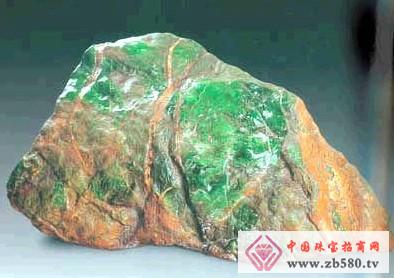The identification of the jade original stone is mainly to observe the various internal phenomena of the jadeite stone by observing various phenomena appearing on the surface of the weathered crust! The following phenomena often appear on the surface of the jade stone!

癣 refers to the appearance of different sizes and shapes on the surface of the jade raw material shell, which is black, dark green or gray! It is a performance characteristic associated with emerald green. It is a provider of chromium ions. It is commonly known as eating green or green with black! The main mineral component of earthworm is alkaline amphibole, usually in the form of columnar and fibrous aggregates. It is indigo blue, blue-black, often around the pyroxene, especially the jadeite is marginal or completely accounted for, and the material around the skin has obvious color changes! If there are a large number of flaky enamels on one surface and a large number of punctate enamels on the other surface, the inside may contain too many minerals such as ancillary stones to produce ruthenium; if there are some enamels on only one side There are performances, and all of them are flaky. It is possible that there is only a little dirt on the surface and it will not have a big impact. If there are defects on two sides or even three faces, it may be dirty inside.
The pine flower refers to the green expression on the skin of the jade gambling stone, that is, the performance of the interior of the jade or the light green on the surface of the leather shell! Since the type, concentration and spatial distribution of the coloring ions are relatively stable in a certain mineralization time and space, the color change and distribution of the jadeite can be inferred according to the shade, quantity and shape of the pine flower color! If the color of the pine flower is thick and bright, the value will be high; if there is no loose flower on the jade skin, there may be little color inside; and if there are many pine flowers on the skin, there may be color inside or only exist on the surface! In addition, whether the pine flower penetrates into the interior of the jade, the depth of penetration, etc., is also one of the basis for inferring the color.
Fog is a layer of fog-like opaque material that exists between the outer weathering shell and the inner jadeite. It is actually the result of the metamorphism of a hard jade mineral! Due to the decrease of temperature and the increase of pressure, the primary mineral jadeite regressed and formed a new secondary mineral wrapped around the jadeite. The central part is jadeite, the outer layer is the secondary mineral layer, and the outermost layer is the weathering crust. pattern! These secondary minerals are mainly albite and nepheline! The fog is thick and thin, with white mist, yellow fog, black fog and red fog! The presence or absence of fog and the color of fog reflect the information of the original rock. The appearance of fog is a sign of green color. The fog of different colors has different indications. The red fog and yellow fog are high due to high iron content. And caused by high iron, which makes the emerald green dark; white fog indicates that the iron is not high, it is a relatively pure jadeite, and it may be green and high.
蟒 is a term used to describe jadeite materials, which refers to the expression of green bands in jadeite in weathered crusts! Generally, the convex zigzag veins are distributed on the surface of the weathering shell, just like a python coil, which is a basis for judging whether there is color or color distribution! The diagenesis and mineralization of jadeite has different generations, forming structural and compositional differences, which leads to different hardnesses and different weathering during the weathering process! Generally, the fine-grained dense structure has stronger weathering resistance than the coarse-grained loose structure, and the green part has stronger weathering resistance than the colorless part, so that the green part of the fine-grained structure protrudes compared with the base of the colorless and light-colored coarse-grained structure. , forming a sash! The green strips of jadeite are mostly the result of post-diagenesis reconstruction. After the diagenetic period, the first deformation is the deformation and rupture of the jadeite under the action of stress, and then the hydrothermal intrusion of the colored ions is carried out to carry out the ion exchange to form a green band! Therefore, the colored strips are mostly deformation rupture zones, and this rupture zone continues to wrinkle and recrystallize under the action of stress and hydrothermal fluid, forming a dense curved jade ribbon, which is reflected on the weathered shell! The shape, color, direction, and inclination of the sash are important signs for judging the green changes of the jade.
Color Glaze Mugs,Ceramic Dinner Set,Tea Cup Porcelain,Reactive Glaze Ceramic
HANDAN OURAY I/E CO., LTD , https://www.ourayceramicware.com